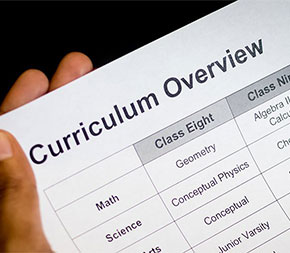
Don’t mistake it for a typo—the ‘A’ in STEAM is intentional. STEAM education is taking the foundation of STEM learning to the next level. STEAM educators are able to help people integrate STEM principles with the arts for a more holistic understanding of our world. Keep reading to learn more about how to pursue a rich career involving this innovative education principle.
Table of Contents
What Is STEAM Education?
STEAM education, an acronym for science, technology, engineering, arts, and mathematics, incorporates the arts into traditional STEM subjects. By integrating visual arts, language arts, physical arts, music, and more, STEAM aims to foster imagination, creativity, and innovation. It provides a holistic learning approach that combines scientific inquiry with artistic expression, promoting interdisciplinary skills for the future.
STEM + Art = STEAM
The STEAM movement originated at the Rhode Island School of Design (RISD) and has since been widely adopted among many institutions and organizations. The objectives of the STEAM movement were created to do the following:
- Transform research policy to place art and design at the center of STEM
- Encourage integration of art and design in education
- Influence employers to hire artists and designers to drive innovation
These objectives can be just as easily be applied in the classroom by STEAM educators. We’ll deep dive into that throughout the following sections.
The Difference Between STEM and STEAM
STEM is a building block for STEAM. STEAM education makes its focus the application of science, technology, engineering and math through art and design. Another way of looking at this is that STEAM educators can help students connect what they learn in these critical areas (STEM) with art practices and design elements. Ultimately, students should feel like they can wonder, critique, inquire and innovate.
STEAM in History
Charles Nègre, a 19th-century photographer, is a classic example of how art and science combine. Photography is in its very nature both artistic and scientific. Nègre enjoyed learning about and experimenting with the chemistry behind photography, the physics and mathematics of optics, and the engineering involved in camera design.
He summed up the notion of STEAM perfectly:
“Where science ends, art begins.”
Why STEAM Is Important
STEAM has received some pushback in the academic and career world. Opponents believe that adding in the arts takes away from STEM education, however, STEAM aims to strengthen the foundation of STEM by helping students enhance their critical thinking skills and recognize the intersection of art, science, technology, engineering, and math.
It gives students tools and methods to explore new and creative ways of problem-solving, displaying data, innovating, and linking multiple fields. The arts and STEM subjects naturally complement and inform each other, so implementing STEAM principles into education allows for more understanding, innovation and a cohesive education in the classroom.
How to Become a STEAM Teacher
The path to a career as a STEM teacher begins as any teaching career would. Most importantly, make sure to get your education through an accredited college or university so you will be qualified for the job market and for student loan forgiveness. Every state has its own requirements, but here are the basics for a teaching career:
- Complete your bachelor’s degree or higher
- Complete a teacher education program
- Get student teaching experience
- Pass a teacher certification exam
Depending on what you want to teach, you may need to complete a specific degree program.
- Preschool or kindergarten: You may qualify to teach STEAM subjects with a degree in early childhood education.
- Elementary school: Typically, you would earn a degree in elementary education.
- Middle school or high school: Most likely you’ll need a bachelor’s degree in education with a concentration in the specific STEAM subject that you intend to teach. Note that for high school, there are an increasing number of schools and school districts that prefer a master’s degree.
Don’t have a degree in education or specific teacher training? If you have a bachelor’s degree in the subject matter you want to teach, a Master of Arts in Teaching degree (MAT) could give you the teacher training you need and prepare you for the certification exam.
Why Earn Your Master’s Degree?
If you’re currently working as a teacher but want to move beyond traditional classroom curriculum into the exciting realm of Science, Technology, Education, Arts, and Math (STEAM), you’ll be preparing to teach for a creative as well as technology-driven world. Earning your master’s degree can equip you with the skills required to meet the challenges facing STEAM educators as they help students understand the importance the arts, and of STEM, in their daily lives.
Here are more great reasons to earn your master’s degree:
- You can move into leadership career roles.
- The U.S. Bureau of Labor Statistics says people with a master’s degree not only earn more than those with a bachelor’s, but are more employable. Consider this: Master’s holders earned on average $229 more per week than bachelor’s degree holders. The ratio of unemployed educators with a master’s was 1.9% as opposed to 2.2% unemployment with a bachelor’s.
- Best of all, you’ll improve your classroom skills and see better student learning outcomes.
Many states also offer alternative programs for teacher certification, which helps increase the number of STEAM educators. Typical requirements include a bachelor’s degree in a STEAM subject and work experience in your subject specialty. You can also always seek a teacher mentor to see if STEAM education is the right path for you.
Scholarships Available for Future STEAM Educators
A teaching career means a solid education, so you may be looking for ways to fund your degree(s). Because STEAM is still a growing means of education, there are few STEAM-specific scholarships available. Many STEM educator scholarships can likely be used for those pursuing a STEAM teaching career, as long as you identify how your career plans benefit the STEM and STEAM fields together.
Remember, however, that some states and local universities or colleges may offer scholarships to residents pursuing a STEAM educator career.
Diversity in STEAM Magazine Scholarship
$500
In order to be eligible, you must write a narrative describing your future plans within STEAM and how you plan to advance in your field. This could be applied to those interested in teaching within STEAM as well.
STEAM Certification
You do not have to be STEAM certified to teach within STEAM fields, however, there are private organizations that do offer certification courses for educators and for schools as a whole. Certification helps educators develop STEAM-centered lesson plans and activities, as well as a holistically STEAM-oriented curriculum.
ISTE offers STEAM resources and project ideas.
EducationCloset offers STEAM certificate courses.
The Future of STEAM Education
Given STEM’s notable increase in importance and prevalence, the future of STEAM education is bright. More and more proponents of the STEAM model of learning and teaching are making it known the positive impact that this type of education has had on their classrooms and their workforce.
There is a pressing demand for STEM workers, not to mention the number of creative fields utilizing STEM information. As schools shift towards a more science, tech, engineering,
STEAM Resources for Current and Future Educators
If you’re curious about where to draw your inspiration from or how to learn more about the STEAM model of teaching, check out the resources below.
Online STEAM Courses for Teachers
Online courses in general are becoming more accessible, popular and robust. There are several resources for online STEAM courses for teachers to help them:
- Understand the theory behind the STEAM movement
- Refine and build on their subject-specific knowledge
- Learn how to create STEAM-oriented lesson plans and curriculums
A few STEAM-specific and STEAM-inclusive resources include:
- EducationCloset, as mentioned above
- Class Central
- Coursera
Also remember that many colleges and universities offer Massive Open Online Courses (MOOCs), free courses designed to add to your skillset and buff up your knowledge base. Do note that MOOCs usually don’t translate into college credit, so they would be purely for personal knowledge and not used for an undergraduate or graduate degree.
Classroom Resources, Activities and Lesson Plans
When it comes to staying creative and making the most out of your classroom time, there are a number of resources you can look to.
How to make your classroom a STEAM classroom:
- Add hands-on projects to your students’ day to let them be more involved
- Include real-world problem-solving activities
- Encourage question-asking
- Let students make decisions about the projects they’re assigned
Making a lesson plan? Here’s a list to check the content and activities against to make sure they’re STEAM-approved:
- There’s a connection between the STEM and the arts/design content
- Both content areas are aligned and held to equal standards
- The lesson encourages inquiry, problem solving and process-based learning
- The arts content is being taught purposefully and as a way to enhance meaning
- You have one of the four 21st century skills: collaboration, creativity, critical thinking, and communication
- Students will apply skills or processes learned from previous instruction of both standards
- Both STEM and arts knowledge is assessed equitably
Want to find some more online inspiration? Take a look at these resources.
PBS Learning Media
https://kcts9.pbslearningmedia.org/
These free resources target student from K-12 and are searchable by grade, subject and type.
Though Pinterest has many uses, it has a wealth of information, activities and ideas for educators.
Library of Congress
Find material for the classroom and for your professional development, using primary sources from the Library’s digital collections.
Diversity in STEAM
Much of the focus for inclusion in STEM and STEAM has revolved around increasing the number of women representing fields that they historically have not. In addition to this, organizations and institutions are also trying to increase the number of minorities doing the same.
Becoming a STEAM educator means you have the opportunity to guide underrepresented students in becoming the new minds behind these fields. To learn more about diversity in STEAM and the impact it has, take a look at Diversity in STEAM Magazine, an online resource dedicated to the people and companies who are making this a reality.
Grants and Financial Resources
STEAM grants may be easier to find than scholarships. We’ve outlined some nationwide grant options below that highlight the importance of educators promoting critical thinking.
NEA Foundation Learning and Leadership Grants
$2,000 – $5,000
The NEA Foundation for the Improvement of Education awards grants to current NEA members who wish to work as school teachers and faculty in public schools or public institutions of higher education.
McCarthey Dressman Teacher Development Grants
Up to $10,000/year, up to $30,000
The Teacher Development Grants are designed for teachers who wish to implement groundbreaking strategies in K-12 classrooms by encouraging critical inquiry.
Fund for Teachers
$5,000 – $10,000
This unique fund awards teachers with grants for professional development based on the principle that the teacher receiving the grants knows what resources they need to grow. It is encouraged to focus on how their growth will impact student learning.
If you’re planning ahead for how you’re going to provide interactive lesson plans, there are also scholarships for current educators to fund the purchase of classroom materials. For example:
Carton 2 Garden Contest
$5,000
Demonstrate your students’ creativity in re-purposing milk or juice cartons to enhance your school garden. This exercise should show a teacher’s engagement with students to teach them about the environment and sustainable packing.
Depending on your STEAM area, there are many more financial aid opportunities like the one above available online. Check out resources like Grants for Teachers for some inspiration.
Have student loans?
If you’re planning for your future, you can research loan forgiveness options for teachers. The U.S. government has designed several options to aid teachers in repaying their student loans.
STEAM on Social Media
If you want to keep up with new articles, ideas or conversations around STEAM education, follow these social media resources.
Facebookhttps://www.facebook.com/STEAMeducation/
Twitterhttps://twitter.com/STEAMeducation
Pinteresthttps://www.pinterest.com/lenschcreative/steam-education/?lp=true
Interested in Becoming a STEAM Educator or Specialist?
If you feel like you want to help students see the intersection of all the subjects in ‘STEAM,’ then pursuing a STEAM educator or specialist position may be ideal for you. You can always start out by volunteering in a classroom to see what subject matter, grade level and type of school works best for you.
To learn more about advanced degrees like a master’s degree or an education specialist degree, visit our degrees page for an in-depth guide.
If you’re ready to browse schools and get more information about them, use our Find Schools button below to start your research.



